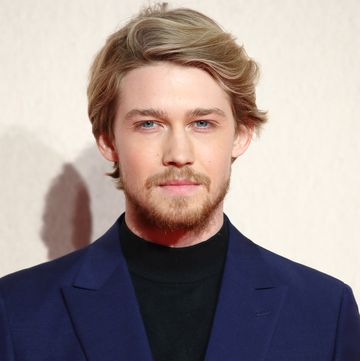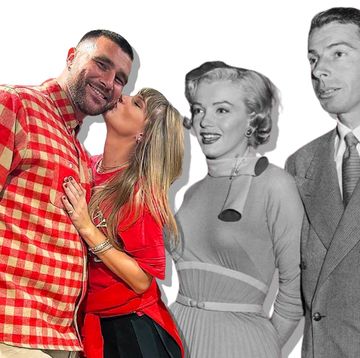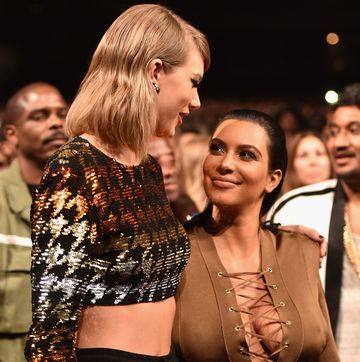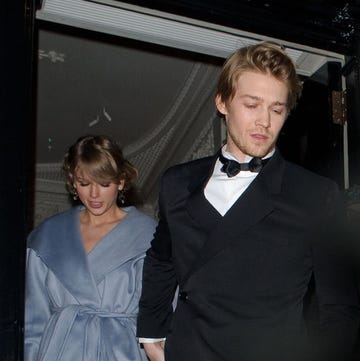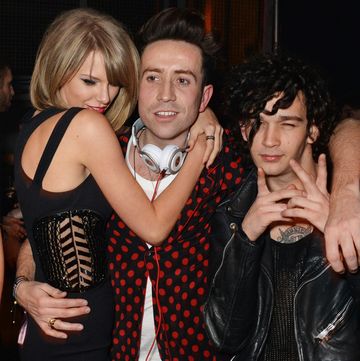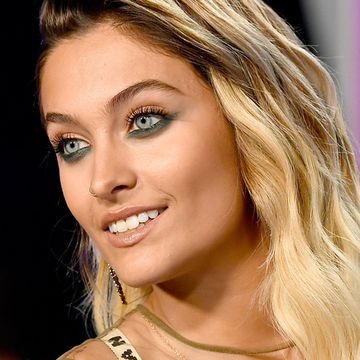'Vous étiez sensationnel,' a man held his hands together in praise, still glistening from his handwashing. It was another fan interrupting my interview with the 24-year-old French singer Sônge.
'Merci', Sônge couldn't help but beam in reply, exposing some of the most beautifully gapped teeth I have ever seen.
We are sitting on a bench by the loos for some quiet after her gig supporting Little Simz at La Gaîté Lyrique in Paris. Which was indeed sensational, by the way, though it sounds less impressive in English.
She doesn't seem to believe me. Like when I tell her my visit to Paris is only to see her, 'Non, just for me?'
Yes, and perhaps a glass of vin and some burnt cream, but mainly for Sônge.
She was described to me as being somewhere between FKA Twigs, M.I.A and Christine and the Queens, and living up to the hype.
Her songs bounced between eerie and popish, closing with a delicate rendition of The Weeknd's The Hill which she stripped bare, leaving only the skeletal backing of a handheld synthesiser and her hauntingly strange and soulful voice.
Taking Control
Sônge is the kind of performer that comes from the Kate Bush school of thought. Much like Solange and the aforementioned FKA and Christine, these women have total control over their music.
Unlike the cookie cutter female popstar that often dominates the charts, habitually a vehicle for others visions; the stylists, the songwriters, the choreographers and the videographers, these women stand apart, extending their creativity to polished, artistic live performances and conceptual music videos.
Joining this club, Sônge writes all of her own music, starting with the chords. She explained her songwriting process like this, 'I begin with the chords, they have to be very deep and twisted.
'These chords give me colours in my head. If I hear a chord that has the diminished fifth, it's freezing.'
'You know, in the middle ages, people who played this chord were thought to be part of witchcraft because it was the chord of the devil? When I hear diminished fifths, or scales with diminished fifths inside, I see deep, deep purple, nearly black and very rough.
'And maybe if I want something more mysterious or silver, I will use a different scale and it will be silver. I work like this.'
As Sônge explains it to me, she makes certain noises, faces and movements to explain the sounds, like when she is talking about the 'rough' feeling of a diminished fifth she sort of growls and makes claws.
Even sitting by the loo, holding a beer in a top and shorts, this doesn't seem strange. Just ten minutes ago she had been on stage, wearing a holographic bomber and glasses that lit up her eyes on the often completely dark stage.
This experience of her writing is what she attempts to share with the audience. The feel, the taste and the colour of her music through her light show, which is, again, all her own doing.
Because she wants you to see what she sees when she hears her music. Like every good artist, her art is an invitation into her own world.
Synaesthesia Songs
Sônge didn't realise synaesthesia was a 'thing' until her late teens. Though I couldn't really believe this, she told me the story of how she found out not everyone experienced a sensory overload when they heard music.
'I heard two people on the train, they were talking about senses and everything.The guy said, "oh I've created a website where I talk about synaesthesia and we have scientific research and people who have it can come and comment and meet each other".
'I was listening to this and I thought everybody hears colours. They were speaking as though it was something extraordinary. So I went to them and asked, "what are you talking about? I hear colours too, it's nothing special." And they were like, "yes it is."'
And as though she still doesn't believe them and thinks that everyone secretly harbours this mystical ability to experience sounds in another form, Sônge breaks from her story to address me, 'Everybody has different sensations, maybe when you listen to music you will imagine shapes, or maybe you have taste in your mouth? Or maybe you will imagine colours? Do you? Or feelings?'
I have to sheepishly shake my head. But she still doesn't want to believe it.
'Everybody has a special perception. I went to see them to tell them it's normal. But they told me "no, not everybody sees this". So that was funny.'
Funny is one word for it. Chromesthesia is the other.
Synaethesia is the umbrella term for all types of senses cross-pollinating or overlapping, be it tasting names, seeing dates spatially arranged or sounds creating overwhelming emotions.
And whilst there is relatively high number of people who have Synaethesia (1 in 24, though this number increases in the Autistic population), there are less with chromesthesia. Though, she is in good company, with the like of Dev Hyndes (Blood Orange), Charli XCX and Pharrell all apparently sharing the neurological phenomenon.
Witch Woman
The science behind it could somehow demystify this idea of music and colour colliding, if it weren't for Sônge's supernatural feeling.
When telling me about her childhood at a horse centre in Brittany she made the weather sound like the most exciting thing that could happen to someone, 'Very inspiring, so inspiring with the nature and the morning fog.
'The morning frog is crazy. I used to live in a horse centre - I still live in a horse centre, because my mum was a horse teacher. I've always lived with horses and nature everywhere. And fog, everywhere.'
Each time she mentioned fog her eyes brightening and her hands grasped at the air for emphasis.
Likewise, when she told me about her time living in Amsterdam, where she met such interesting people, she said they would be enough to inspire her 'for centuries to come'.
Not just one century, but many.
I couldn't help but ask what feeds this ethereal language and view of the world?
'I'm very influenced by myths. Ethiopian myths, Moroccan, Algerian, myths from Mongolia. German myths like what Wagner used- very inspired.
'It's the magical creatures, the magical spells, imagination, colourful imagination. It also had a lot to do with childhood, I know I'm a child, I'm always a child, maybe because I read these.'
And she's right, there is something incredibly childlike about Sônge. Though she's relatively young, she has a wisdom about her. But her passion is decidedly unguarded.
Maybe it's because she's at the cusp of something, before she becomes blasé about a journalist coming to interview her from another country, or maybe starts to realise and understand her own talent.
But hopefully not, because the girl sitting by the loos, blushing every time a stranger hands her a compliment was fascinating, and could very well be your next musical obsession.
Sônge will be performing at The Great Escape Festival in Brighton in May.
Daisy Murray is the Digital Fashion Editor at ELLE UK, spotlighting emerging designers, sustainable shopping, and celebrity style. Since joining in 2016 as an editorial intern, Daisy has run the gamut of fashion journalism - interviewing Molly Goddard backstage at London Fashion Week, investigating the power of androgynous dressing and celebrating the joys of vintage shopping.


